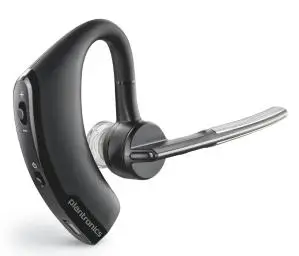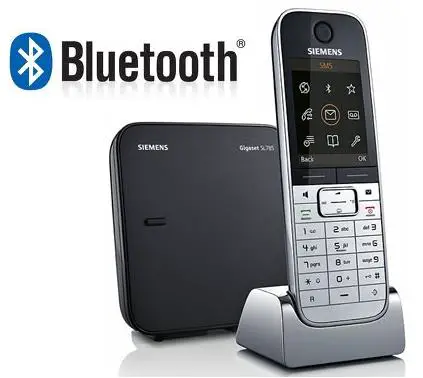If you’re anything like me then you use Bluetooth all the time, to sync your phone with your hands-free headset, to play tunes in your car, and to transfer files from your tablet or computer. But what exactly is this technology and how does it work?
Who, What, and Why
 Essentially Bluetooth is a method of wirelessly syncing devices via radio waves in a way that product manufactures have all agreed on (over 17,000 organizations). This means that to create a Bluetooth product, companies need to ensure that their devices use certain frequencies to transmit and receive information.
Essentially Bluetooth is a method of wirelessly syncing devices via radio waves in a way that product manufactures have all agreed on (over 17,000 organizations). This means that to create a Bluetooth product, companies need to ensure that their devices use certain frequencies to transmit and receive information.
This means that instead of each different company having their own kind of data transmission, any company (no matter how large or small) can create a device which can communicate with other more established products (such as an iPhone) and vice versa with no barriers to production. The central benefits are: innovation (leading to a bigger range of products) and an open market (leading to lower costs for consumers). An example where such a unilateral agreement is not in place is in power adaptors manufacturing where global brands have still not standardized their power adaptor connections across all devices, this is both frustrating (as a consumer) and limiting as new companies must spend additional funds adapting to numerous power outlets (imagine a Speaker Port company trying to play all the top MP3 players – it needs several extensions to charge all of them).
Thanks to the “Bluetooth Special Interest Group” similar barriers to progress are not in place and thousands of global brands in telecoms, IT, and consumer electronics all use Bluetooth to allow their devices to wirelessly communicate with millions of others.
Personal Area Network & ISM
 Bluetooth is a collection of 79 frequencies which make up a set called a “Radio Protocol” such that all Bluetooth devices can communicate within these frequencies, this creates a Personal Area Network. Similarly to the Local Area Network or “LAN” (connecting two or more computers together) and the Wide Area Network or “WAN” (connecting to the Internet), your Personal Area Network or “PAN” is essentially a portable network that surrounds your device.
Bluetooth is a collection of 79 frequencies which make up a set called a “Radio Protocol” such that all Bluetooth devices can communicate within these frequencies, this creates a Personal Area Network. Similarly to the Local Area Network or “LAN” (connecting two or more computers together) and the Wide Area Network or “WAN” (connecting to the Internet), your Personal Area Network or “PAN” is essentially a portable network that surrounds your device.
The major difference between regular radio devices such as AM radios, TVs, and Two-Way Radios, is the range with which they can send information. Typically, these regular radio devices transmit data over large distances, whereas Bluetooth has a range of only around 10-20 meters. This provides a more intense localized transmission area which is perfect for the syncing of portable or lightweight devices.
Bluetooth frequencies work on the unlicensed industrial, scientific and medical band (ISM). One of the downsides of such open frequency communication, however, is that certain versions of Bluetooth are not able to encrypt information during transmission and thus do so insecurely. There have been some unfortunate case studies where conversations have been overheard via people tapping into local frequencies of Bluetooth headsets and these issues are a worrying symptom of the openness Bluetooth relies on. Nevertheless, it is precisely because of this openness that such innovation has erupted over the last decade, allowing for a vast array of compatible accessories ranging from the fun and unique to the functional and essential. Once again, the ability for any company to create a device which is compatible with major mobile handsets on the market ensures creativity and choice in a fast moving industry.
<Images credit: www.ligo.co.uk>

Great insight about the technology everyone is using but never cared to learn about the tech aspect of it. This is to the point and riveting. Thanks for this wonderful share.
Oh wow, so complicated. I knew the main principles of Bluetooth work and even google why it has such name (in the name of Danish King blahblahblah) but didn’t even suspect that there is so much behind it! Thanks for sharing!
I just read the title of the post & came in too see it! 🙂 🙂 Really amazing post Alexa! 🙂
I’ve had mixed results with it but I stopped using it when the risks of having a high frequency signal sitting on top of your skull became public.
I always wanted to know the stuff behind Bluetooth but couldn’t find it in any book. Great article. Thanks for sharing.
It is still so nice when you know how exactly your devices are working. And I like the idea that no matter how big or small the manufacturers are, they still the the same standard to follow.
I enjoyed reading this educative piece of information. Bluetooth is fascinating but not many know how it works. You have put it in such a way that even I can understand it. A thousand thanks to you Peter.
Thanks for the informative article shared!!!
As we use Bluetooth daily in life but don’t know how it works. So this post will help us to know how is the data being transferred from device to device.
great info peter
i use bluetooth on almost all days but never thought about how it actually works? thanks for this post. really informative. we should have knowledge about the gadgets and technologies we are using
Technology is fun to enjoy, but it’s even more so if we learn how it actually works isn’t it? 😉 Thanks for commenting, Prabhat!
Just one question, which is what lead me here: is the security of Bluetooth really such a concern? I’ve seen some software out there that purports to “spy” on someone else’s phone via bluetooth. However, it screams “scam” to me. Aside from being completely illegal if you don’t own the target phone, spying via bluetooth will work only if the target phone’s bluetooth is turned on and the device is visible, right? And even then the user of the target phone would need to pair with the spy device by entering some kind of code, right?
Or if somehow it did get accidentally paired, the phone would send audio only to one output device, so if the user picks up his phone and no sound comes out (b/c it’s being diverted to the “spy device”), he would know something is wrong, not to mention unable to carry on any conversation with the potential to reveal information.
Hey Peter,
I use bluetooth all the time but never thought about its working principle but Thanks to you Peter, for sharing this. Now I understand how data is being transferred from mobile to mobile.